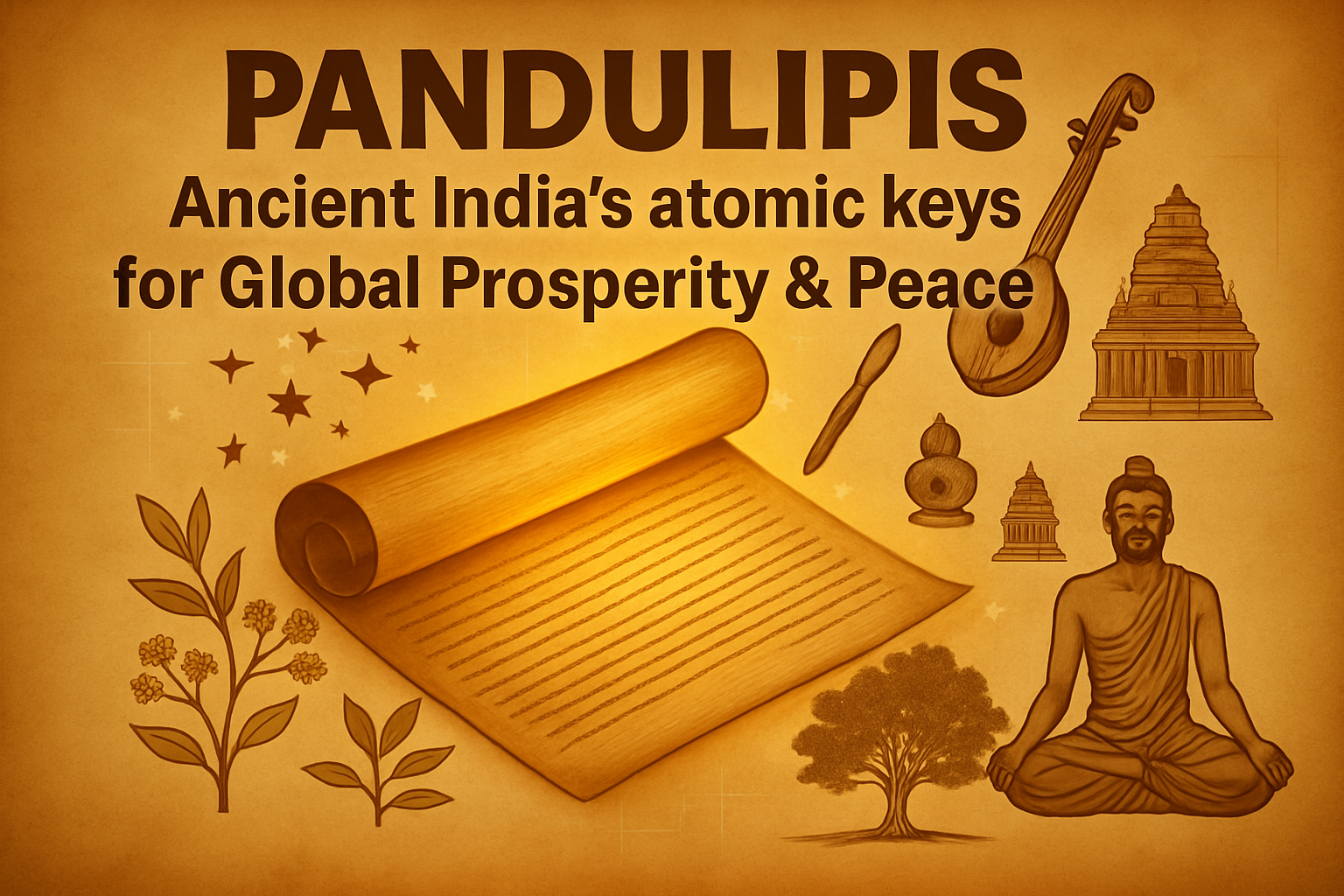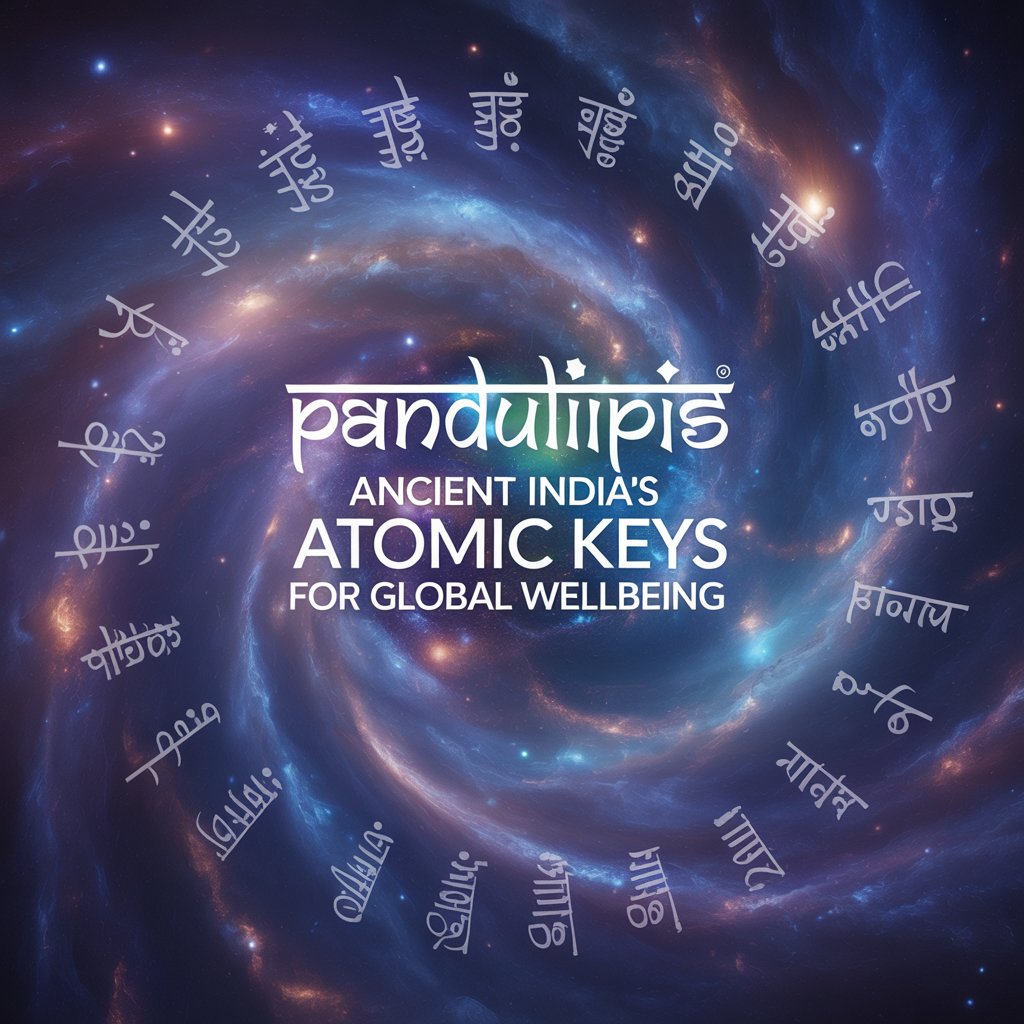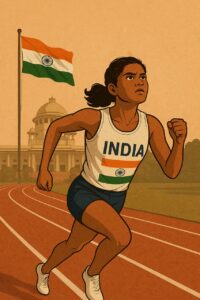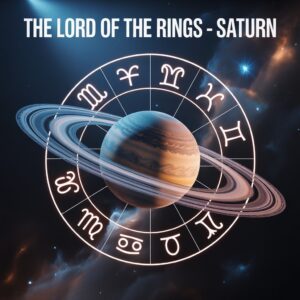What if the blueprints for healing our planet, revolutionizing medicine, and achieving true well-being were written thousands of years ago.? What if the future of sustainable living, mental health, and scientific innovation lay hidden in palm leaf manuscripts gathering dust in forgotten archives.? Welcome to the extraordinary world of India’s Pandulipis’, ancient texts that aren’t relics of the past, but prophecies of our future

The Cosmic Visionaries: When Ancient India Mapped the Universe
The Surya Siddhanta (4th-5th century CE) didn’t just observe the stars, it decoded the universe’s operating system. While Europe was still convinced the Earth was flat, this manuscript calculated the speed of light, described heliocentrism, and mapped planetary motions with precision that makes modern astronomers pause in wonder. Today, ISRO’s interplanetary missions still reference its celestial calculations.
The question that haunts us: How did ancient minds achieve what took the West another millennium to discover?
Aryabhata’s Aryabhatiya (5th century CE) didn’t merely introduce zero, it revolutionized human thought itself. This manuscript birthed algebra, explained Earth’s rotation, and laid foundations that every calculator, computer, and space mission depend upon today. Without Aryabhata, there would be no digital age.
The Bakhshali Manuscript (3rd century CE) recently shocked the mathematical world when AI analysis revealed calculus techniques hidden within its verses, predating Newton by over a thousand years. Each symbol contains layers of meaning that modern mathematicians are still unravelling.
The Atomic Prophets: Ancient Quantum Physics
The Vaisheshika Sutra (2nd century BCE) described “paramanu”; indivisible particles, two millennia before quantum physics was born. This wasn’t philosophy; it was physics. It outlined atomic theory with startling accuracy, as if its authors had somehow peered into matter’s deepest secrets.
Today, as we grapple with quantum computing and nanotechnology, this ancient text offers insights that could accelerate our understanding of reality’s fundamental nature.
The Master Surgeons: Medical Miracles from Millennia Past
The Sushruta Samhita (6th century BCE) reads like a manual from an advanced civilization. It describes 120 surgical instruments, details rhinoplasty techniques, performs cataract surgeries, and pioneers skin grafts—procedures that modern medicine validates as remarkably sophisticated.
Imagine: while most of the world relied on prayers for healing, Indian surgeons were performing complex operations with precision instruments.
The Charaka Samhita (1st century CE) offers something even more revolutionary: a complete system of medicine that treats the whole human being—body, mind, and spirit. As today’s healthcare systems buckle under chronic disease and mental health crises, Ayurveda’s holistic approach provides a roadmap for true healing.
The Ashtanga Hridayam (7th century CE) presents an integrated wellness philosophy that modern preventive medicine is only now beginning to understand—the profound connection between lifestyle, nutrition, mental state, and physical health.
The Environmental Guardians: Ecological Wisdom for a Dying Planet
Vrikshayurveda (10th century CE) emerges as perhaps the most urgent manuscript for our times. This comprehensive guide to plant science and sustainable agriculture offers solutions to food security, soil degradation, and ecological collapse that our modern world desperately needs. As climate change threatens global food systems, this ancient text provides time-tested methods for regenerative agriculture and environmental stewardship.
The Rigveda and Atharvaveda contain humanity’s oldest environmental protection protocols, sacred groves, air purification techniques, and conservation practices that sustained civilization for millennia. These texts understood something we’ve forgotten: that human prosperity and planetary health are inseparable.
The Mind Masters: Ancient Psychology for Modern Mental Health
The Yoga Sutras of Patanjali (2nd century BCE) didn’t just create physical exercises; it developed the world’s first systematic approach to mental health and consciousness. Today, as anxiety and depression reach epidemic proportions, these ancient techniques offer proven pathways to psychological resilience and inner peace.
The Bhagavad Gita transcends religious boundaries to provide what might be history’s most sophisticated manual for stress management, decision-making under pressure, and maintaining mental equilibrium in chaotic times. Modern psychology is rediscovering principles this text articulated thousands of years ago.
The Cultural Architects: Blueprint for Human Flourishing
The Natya Shastra (2nd century BCE – 2nd century CE) reveals how ancient India understood something we’re still learning: that arts, culture, and aesthetics aren’t luxuries—they’re essential for human development and social harmony. This comprehensive guide to performing arts offers insights into human psychology, emotion, and community building.
Sarangadeva’s Sangita Ratnakara (13th century CE) catalogues musical ragas with therapeutic properties that modern neuroscience is just beginning to validate. Could ancient sound healing be the missing piece in our mental health puzzle?
The Daily Life Revolutionaries: Practical Wisdom for Modern Living

Gandhayukti (5th century CE) pioneered aromatherapy and scent science with formulations now being studied by space agencies for psychological effects in confined environments. These ancient perfumers understood the profound connection between scent and mental well-being.
Pakadarpanam (12th century CE) reveals that Indian cuisine isn’t just about flavor, it’s about fermentation science, nutritional balance, and food as medicine. As the world grapples with processed food crises, these ancient culinary techniques offer a path back to nourishing sustenance.
The Pandulipis as Global Torch Bearers: India’s Gift to Humanity
These manuscripts aren’t India’s heritage alone—they’re humanity’s inheritance. As the world faces unprecedented challenges—climate collapse, mental health epidemics, ecological destruction, and spiritual emptiness—India’s Pandulipis offer tested solutions from a civilization that sustained itself for millennia.
The Evidence is Undeniable:
- Modern medicine increasingly validates Ayurvedic principles
- Yoga and meditation have become global wellness standards
- Sustainable agriculture draws from ancient Indian techniques
- Quantum physics echoes ancient Indian atomic theory
- Environmental science rediscovers traditional ecological wisdom
- Healthcare systems that treat causes, not just symptoms
- Educational models that develop both intellect and wisdom
- Agricultural practices that regenerate rather than deplete
- Urban planning that works with natural systems
- Mental health approaches that address root causes
- Scientific methods that integrate empirical and intuitive knowledge
The Urgent Call: From Archive to Action
The Global Challenge: While the West spent centuries conquering nature, India’s ancient texts reveal a different path, one of harmony, sustainability, and holistic understanding. These manuscripts offer blueprints for:
The Great Irony: As humanity searches for solutions to modern crises, the answers lie preserved in palm leaf manuscripts, waiting to be rediscovered and applied.
The Great Opportunity: India’s Pandulipis aren’t museum pieces—they’re instruction manuals for human flourishing that remain as relevant today as they were millennia ago.
The Great Responsibility: These texts face extinction through neglect, decay, and lack of translation. We risk losing humanity’s greatest treasure trove of practical wisdom just when we need it most.
The Future Begins in the Past
What if the path forward doesn’t lie in inventing new solutions, but in rediscovering ancient ones? What if India’s Pandulipis aren’t artifacts of history, but blueprints for humanity’s next evolutionary leap?
The manuscripts have preserved the ink of genius across millennia. They offer tested solutions, proven practices, and profound wisdom for every challenge we face.
The question isn’t whether these ancient texts can guide us toward a sustainable, healthy, and meaningful future.
The question is: Are we wise enough to listen?
The torch of human knowledge, lit in ancient India, still burns bright. It’s time for the world to gather around its flame and light the way forward.


